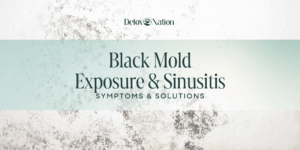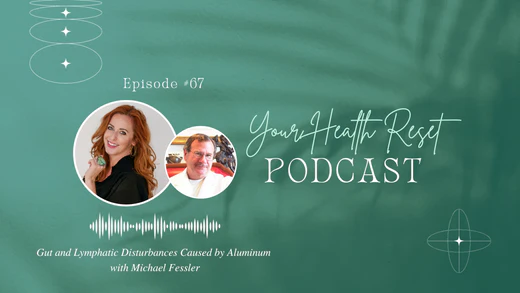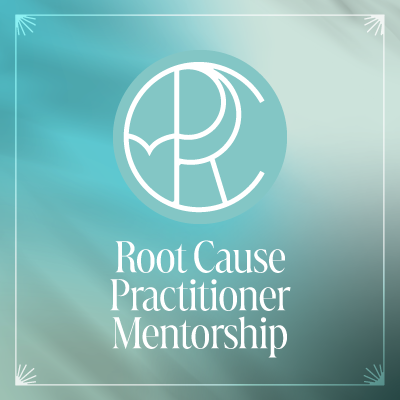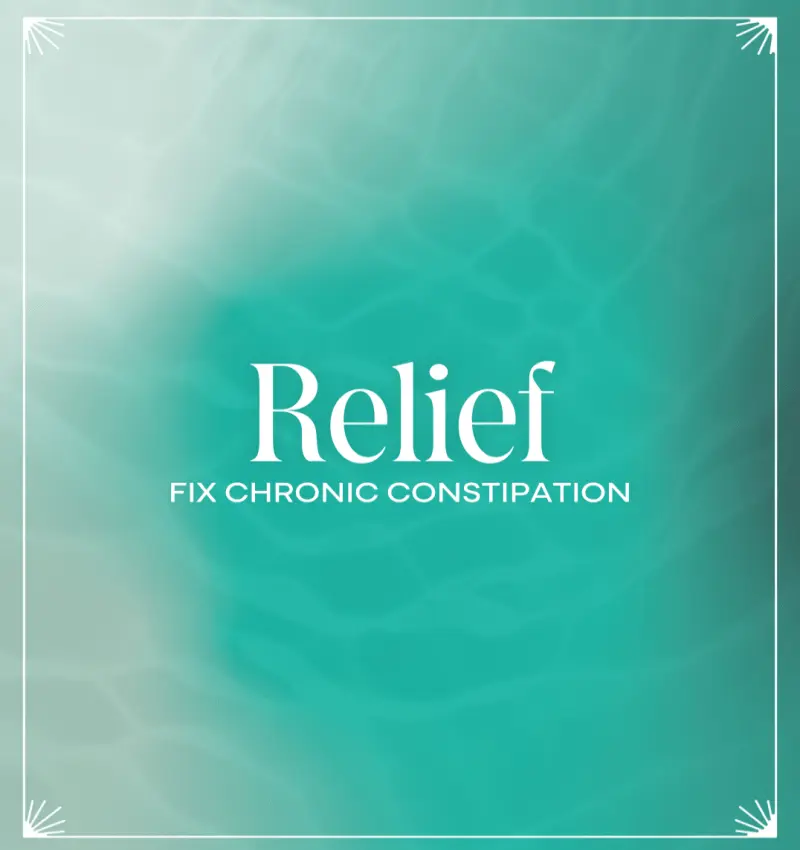The debate between saturated and unsaturated fats has left many of us confused about what’s good and what’s harmful. This article explores the chemistry of fats, revealing the power of healthy fats to heal and the dangers of bad fats that fuel inflammation and chronic symptoms.
We’ve been duped.
For decades, saturated fats have been the dietary villain blamed for heart disease, but as it turns out, this bad reputation might be as overblown as your mom’s reaction to that “C” you got in middle school (1).
The so-called “evidence” against saturated fats came largely from the 1950s “Seven Countries Study” by Ancel Keys, which was extremely flawed.
Less than 5% of the participants (about 500 men) had their diets actually measured, and the methods were inconsistent, unvalidated, and didn’t account for confounding factors (1). They didn’t even include women in the sample!
Seriously, it was about as rigorous as asking your neighbor which diet they think works best.
But hey, it sounded good enough to scare us into swapping butter for margarine.
And current research isn’t much better. It’s almost impossible to find studies that aren’t somehow tied to those with a financial incentive to sway your opinion.
Let’s look at the science and break it down so you can apply common sense and reach your own conclusions.
Oh, and while we’ve all been distracted with the whole “saturated vs unsaturated issue,” industrial food companies have insidiously inserted their toxic franken-oils into pretty much everything.
These factory-made toxins masquerading as edible oils and spreads don’t fuel your body. Instead, they light the “dumpster-fire” of chronic inflammation that leads to chronic symptoms.

Fats are a non-negotiable part of a healthy body.
You just need the right ones.
Keep reading to understand the differences between saturated and unsaturated fats, the toxic truth about seed oils, and how you can easily add healthy fats to your diet.
Key Takeaways
- Previous “research” on dietary fats was unscientific, and current studies may be biased.
- Industrial seed oils are toxic and promote chronic inflammation.
- Healthy fats are non-negotiable.
The Chemistry of Fats: No Chemistry Degree Required!
If you’ve ever stood in the grocery aisle wondering whether to grab butter, olive oil, or something in a bottle labeled “heart-healthy” but suspiciously vague, this one’s for you.
Let’s break down fats—saturated, monounsaturated, and polyunsaturated—from a chemistry perspective, so you can dodge health gimmicks and make informed choices.
The Structure of Fats: Saturated Fats, Unsaturated Fats, and Trans Fats
All fats are built from the same basic ingredients: fatty acids attached to a backbone molecule called glycerol. What makes one fat different from another is the bonds between carbon atoms in the fatty acid chains.
A carbon atom can have up to four bonds with other atoms. Imagine a carbon atom connected to another atom to the North, South, East, and West. (This isn’t technically accurate, as different atoms can make their bonds – and the resulting molecule – in different shapes, but it’s close enough for our purposes.)
Are you ready to show up in a BIG way for yourself?
I invite you to take my liver assessment self-quiz to get started!
Take My Liver Assessment Quiz Now!What does this mean for dietary fats?
- Saturated Fats: These are the simplest fats. Allll the carbons in the chain are connected by single bonds, with each carbon holding as many hydrogens as possible (hence “saturated”). (1) This tight, stable structure means they’re solid at room temperature, like butter or coconut oil.
- Monounsaturated Fats: These have one double bond between two carbon atoms (3). A double bond bends the chain slightly, making it less tightly packed and more fluid. Olive oil and avocado oil are good examples and are liquid at room temperature.
- Polyunsaturated Fats: These fats have multiple double bonds, which create a more flexible but unstable structure (3). You’ll find omega-3s in things like flaxseed oil, fish oil, and omega-6s in a lot of processed vegetable oils (soybean, corn, canola) and foods.
- Trans-Fats: Trans fats are the ultimate franken-fats, made by forcing hydrogen into liquid vegetable oils to make them solid and extend shelf life—think margarine and cheap baked goods. They’re a metabolic disaster, raising your bad cholesterol, tanking your good cholesterol, and driving inflammation like a cranky toddler on a sugar high. They’ve been found to reduce telomere length and cognition among other things. (8) Avoid them like gas station sushi. Labeling rules favor the manufacturer, so if anything says “partially hydrogenated” assume it contains trans fats!
Why Bonds Matter: Stability and Oxidation
Let’s talk chemistry without making your eyes glaze over.
The single bonds in saturated fats are rock-solid and hard to break, like a solid brick wall.
Double bonds, found in unsaturated fats, are more delicate. They’re like a wobbly chain-link fence: functional but prone to breaking under pressure, especially from heat, light, or oxygen.
When a fat’s double bonds break apart, the process is called oxidation, and it’s not your friend.
Oxidation creates free radicals, which are unstable molecules on a destructive rampage, stealing electrons from your cells.
This sets off a chain reaction that creates reactive oxygen species (ROS), damaging your DNA, proteins, and cell membranes.
Saturated fats resist oxidation because they lack those fragile double bonds.
Monounsaturated fats are moderately stable, but polyunsaturated fats are a hot mess, especially when heated. That’s why frying with vegetable oils is a recipe for inflammatory chaos.
Processed oils, like vegetable oil and canola oil, can become rancid due to oxidation.
Rancid oils not only taste bad and have reduced nutritional value, but they also form harmful compounds that damage cells and contribute to your chronic symptoms.
What This Means for Dietary Fats
Let’s get practical. Understanding fat chemistry helps you choose the right fat for the right job:
- Saturated Fats Are Your Heat-Stable Heroes
These fats, like grass-fed or grass-finished butter, ghee, and coconut oil, can handle high temperatures without breaking down. They’re ideal for frying, roasting, and sautéing. Plus, they’re rich in fat-soluble vitamins and don’t oxidize easily.
- Monounsaturated Fats Are Versatile and Healthy
Olive oil and avocado oil are solid choices for cooking at medium heat or enjoying raw (think salad dressings). They’re more stable than polyunsaturated fats and have well-documented health benefits, including heart health and anti-inflammatory properties.
- Polyunsaturated Fats: Proceed with Caution
While omega-3s from wild-caught fatty fish and flaxseeds are essential for health, the oils extracted from seeds like soy, corn, and canola are highly prone to oxidation. Skip cooking with these and focus on getting polyunsaturated fats in their whole-food form to enjoy health benefits such as decreased insulin resistance, lower triglycerides, and decreased inflammation (3, 9).

Dietary Fats Key Takeaway: Keep It Simple
The best dietary fats are those that align with your body’s chemistry, offering nourishment without causing oxidative stress.
By understanding a little fat chemistry, you can make choices that support your health without falling for marketing hype. Now that we have a foundation, let’s go even deeper into why toxic fats are toxic and why healthy fats are healthy.
The Toxic Truth About Seed Oils (Truly Bad Fats)
Seed oils are health-destructive on many levels, including their processing methods. These oils, like canola, soybean, and corn, often have high levels of omega-6 fatty acids, leading to health issues.
Industrial Processing Of Seed Oils
Seed oils undergo intense processing (18, 19). First, many of the crops are grown using GMO seeds, and this is problematic for a multitude of reasons, including the use of glyphosate and atrazine. These chemicals leave residues behind and contribute to the toxic nature of seed oils (24).
Once harvested, chemical solvents like hexane are used to extract oils from seeds (18, 19, 23). These processes strip oils of nutrients, which makes them less healthy and more toxic.
Then bleaching and deodorizing are performed to make the oils look and taste better (18, 19). Am I the only one gagging at this?
High Heat Extraction
High heat extraction is a common method to obtain seed oils and involves high temperatures that cause oxidization.
- When oils oxidize, they can produce harmful compounds like advanced lipid peroxidation end products (ALEs) (17, 25).
- The breakdown of fatty acids during this process can lead to the formation of trans fats.
- High heat changes the chemical structure of fatty acids, including omega-3 and omega-6, altering their health benefits (26, 27).

Additives
According to the Codus Alimentarius, the International Food Standards developed by the Food and Agriculture Organization of the United Nations and the World Health Organization, vegetable oils and fats can contain any of twenty-nine additives (16). These can include known toxins such as:
- Propyl Gallate: In a 2023 study, this was found to increase mitochondrial stress, cell death, free radicals, and DNA damage in mice oocytes (female reproductive eggs) (19).
- Butylated Hydroxyanisole (BHA): BHA can interfere with your thyroid gland; metabolism and growth; nervous system, reproductive system, and more (20, 21).
- Butylated Hydroxytoluene (BHT): BHT has been linked to sleep changes, alterations in brain serotonin and norepinephrine, endocrine disruption, reproductive disorders, fibrosis, and (in one study) increased proliferation of a uterine tumor (21, 22).
For comparison, good old butter can only contain eight additives, all of which I can pronounce (16)!
Inflammation, Oxidative Stress, And Chronic Symptoms
Seed oils are high in omega-6 fatty acids, which can disrupt the balance of omega-3 to omega-6 in your diet. This imbalance is linked to chronic inflammation, as omega-6 fatty acids can promote inflammatory processes in the body (28).
Chronic inflammation may lead to conditions like heart disease and arthritis. Oxidative stress, caused by harmful compounds in processed seed oils, further contributes to these chronic symptoms.
Now that we’ve seen the dangers of toxic fats, let’s explore the benefits of healing fats!
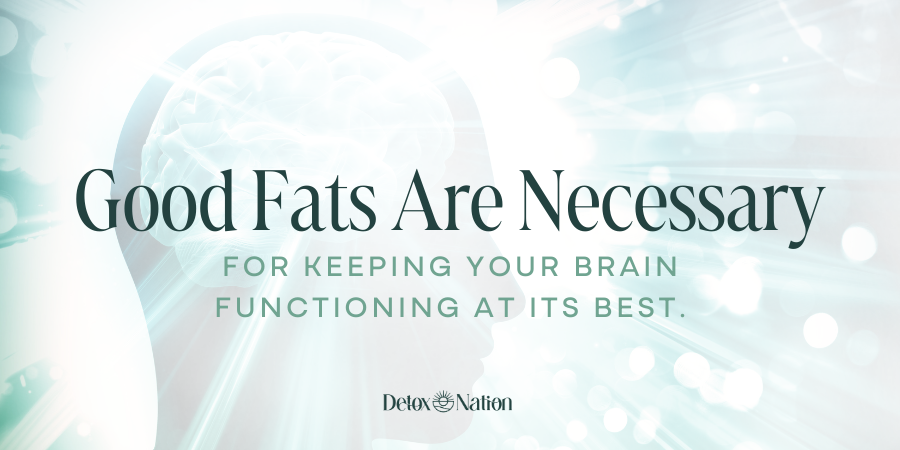
The Healing Power Of Healthy Fats
Healthy fats play a vital role in supporting various bodily functions. They can aid in cellular repair, enhance brain health, and maintain hormonal balance.
Healing Fats And Cellular Repair
Good fats are crucial in helping your body repair cells. They make up cell membranes and provide the flexibility and strength needed for proper cellular function.
When your cells are healthy, they communicate better, which is significant for maintaining cardiovascular health.
Monounsaturated fats support the restoration of cell structure. Omega-3 fatty acids aid in reducing inflammation and promoting effective cellular repair.
Good Fats And Brain Health
Do you have brain fog, trouble staying engaged in a conversation, or maybe you keep forgetting where you put your phone?
Good fats are necessary for keeping your brain functioning at its best. Some functions of good fats in the nervous system include:
- Build cell membranes in the brain (29)
- Make hormones that regulate mood and cognition (32)
- Enhance neuronal flexibility, which helps nerves to communicate (30, 31)
- Produce myelin, a substance that acts like insulation to protect neurons (31)
Good Fats And Hormonal Balance
What do skin, reproduction, sleep-wake cycles, energy, hair growth, mood, cognition, and stress response all have in common?
You guessed it – Hormones!
Fats help create and balance hormones to keep your body running smoothly.
Hormones control everything from metabolism to mood, making their balance crucial.
Fat-soluble vitamins like A, D, E, and K, found in healing fats, play a role in hormone production and balance.
Food Sources of Fats:
Many foods contain multiple types of fat. For example, an egg has about 1.5 grams of saturated fat, 5 grams of monounsaturated fat, and 2 grams of polyunsaturated fats.
Here’s a quick list of food sources of the different types of fats:
Saturated Fats:
- Grass-fed or grass-finished butter, beef, pork, and lamb
- Full-fat dairy products from grass-fed or grass-finished animals
- Coconut oil
- Ghee
- Brazil nuts, cashews, macadamia nuts

Monounsaturated Fats (MUFAs):
- Olive Oil
- Avocado Oil
- Almonds, pistachios, pecans, and hazelnuts
- Olives
- Avocados
- Grass-fed or grass-finished beef (approximately 50% of the fats are MUFAs)
- Pumpkin seeds
- Chia seeds
Polyunsaturated Fats (PUFAs):
- Flax
- Walnuts
- Fatty Fish (wild-caught salmon, anchovies, herring, mackerel, sardines, blue fin tuna, and cobia
- Tahini
- Vegetable oils (soybean, corn, canola, safflower, grapeseed, etc.)
Trans-Fats:
- Vegetable oils and spreads
- Margarine
- Shortening
- Mayo and dips
- Salad dressings
- Artificial whipped cream
- Frosting
- Fried Foods
- Non-dairy creamers
- Processed foods, especially baked goods
- Anything “Partially Hydrogenated” or “Hydrogenated”
- Most restaurant food and fast food
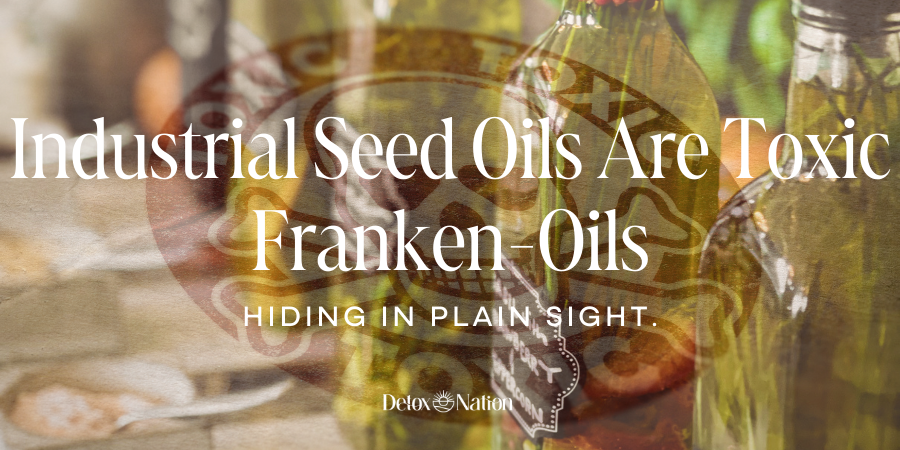
Better Choices
Have you gone on a pantry-cleaning frenzy yet?
I think you’re ready to toss the vegetable oil away – but what do you replace it with?
Here’s the great news: You have lots of options!
Grass-Fed And Grass-Finished Butter
Grass-fed and grass-finished beef and butter are high in saturated fats and have some significant nutritional perks.
Their fat content includes a better omega-3 to omega-6 ratio, which plays a key role in reducing inflammation (12). This benefit is crucial for keeping your heart and brain healthy.
Compared to grain-fed products, grass-fed or finished products also provide more beneficial fatty acids (6).
Notably, grass-fed beef is rich in conjugated linoleic acid (CLA), which is linked to reduced body fat.
Ghee
Ghee is butter without the milk solids that many people are sensitive to and has been used in traditional cooking for centuries.
The decadence of butter without the tummy rumblings!
In addition, it’s packed with butyrate, a short-chain fatty acid that fights inflammation and strengthens your gut lining (4).
Even better, research has shown that using ghee does not contribute to cardiovascular disease (5)!

Avocado Oil
Avocados are healing champs! Maybe your neighbor’s strange obsession with avocado toast isn’t so weird after all.
Avocado oil is pure, versatile, and full of good monounsaturated fats and antioxidants.
Also, it doesn’t oxidize easily, so you can use it when cooking.
Coconut Oil
Coconut oil is a rich source of medium-chain triglycerides (MCTs), which are fats that your body can easily convert into energy.
This makes coconut oil helpful for those looking to support their metabolism. It can even increase your levels of “good” cholesterol (13)!
Beyond metabolism, coconut oil has antimicrobial properties (7) to help fight off harmful bacteria and other pathogens in your gut. This can contribute to improving digestive health.
Coconut oil is often used in skincare and hair care because of its moisturizing properties. It can help keep your skin soft and reduce dryness.
It helps my energy levels, my cholesterol, my gut, and reduces frizz in my hair? Yes, please!

How to Flip the Script on Fats:
Your cells can recover from toxic fats.
It’s entirely possible to upgrade your fat quality and detox the toxic fats that have been interfering with your health.
Step one is obvious: Ditch the bad fats.
You can’t heal while chugging industrial seed oils. Period.
Step two: Fuel your cells with the good fats we just talked about.
Swap out the cheap seed oils for ghee or coconut oil the next time you’re at the store. That $2 difference is literally the price of less inflammation and toxicity. Worth it, don’t you think?
If this seems overwhelming, I get it.
You’re unlearning decades of misinformation, and that’s no small feat.
Start small.
Pick ONE toxic fat in your life and Kick. It. Out.
Then, add ONE healing fat.
With every little swap, you’re helping your cells heal.
No one can fix this for you.
Not your doctor, not your favorite wellness podcaster, not me. (It would just be weird if I followed you around the grocery store adding ghee and other goodies to your cart!)
This isn’t about being “perfect.”
It’s about being better.
Your body is always healing.
And it’s rooting for you – even when you’re downing things like liquid sugar mixed with synthetic oils, otherwise known as coffee creamer (Been there!).
Every small change you make is like dropping a gold coin into your body’s health bank.
You’re worth the investment.
You get to choose what goes on your plate, what fuels your cells, and maybe most importantly, how you show up for yourself.
Are you ready to show up in a BIG way for yourself?
I invite you to take my liver assessment self-quiz to get started!
Take My Liver Assessment Quiz Now!Frequently Asked Questions
Is there really such a thing as good and bad fats?
The short answer is yes. Some fats simply contain more health benefits than others. Other fats are toxic due to their structure and processing – these are the fats to avoid.
I’m seeing monounsaturated fats in my diet; should I be happy about it?
Yes, you should! Monounsaturated fats, like the beneficial fats found in olive oil and avocados, can help lower bad cholesterol levels. Including them in your diet could benefit your heart by reducing heart disease risk.
Isn’t there a link between saturated fats and heart disease?
Saturated fats are an important part of a healthy diet. The studies linking saturated fats to heart disease were riddled with issues making them unreliable at best. Like the rest of your food choices, the quality of the fats in your diet matters. Common sources of saturated fats include foods like butter and meat. Choose grass-fed or grass-finished products and consume as part of a balanced diet.
Snack time! Which fats will keep my body smiling?
For a heart-healthy snack, go for nuts and seeds. They contain good fats, which can improve cholesterol levels. Avoid snacks with omega-6 fats and trans fats—these can increase your risk of heart disease.
Trying to eat healthy—are polyunsaturated fats the top fats I should embrace?
Not necessarily – when eating healthy you should limit processed oils – here’s a quick reference:
– Cook with saturated fats for their stability and nutrient density.
– Use monounsaturated fats for lower-heat cooking or as a finishing oil.
– Limit polyunsaturated oils, especially processed ones, and get omega-3s from real food instead.
Monounsaturated and polyunsaturated fats are found in many foods. These fats are liquid at room temperature and are more susceptible to oxidation due to their chemical structure.



